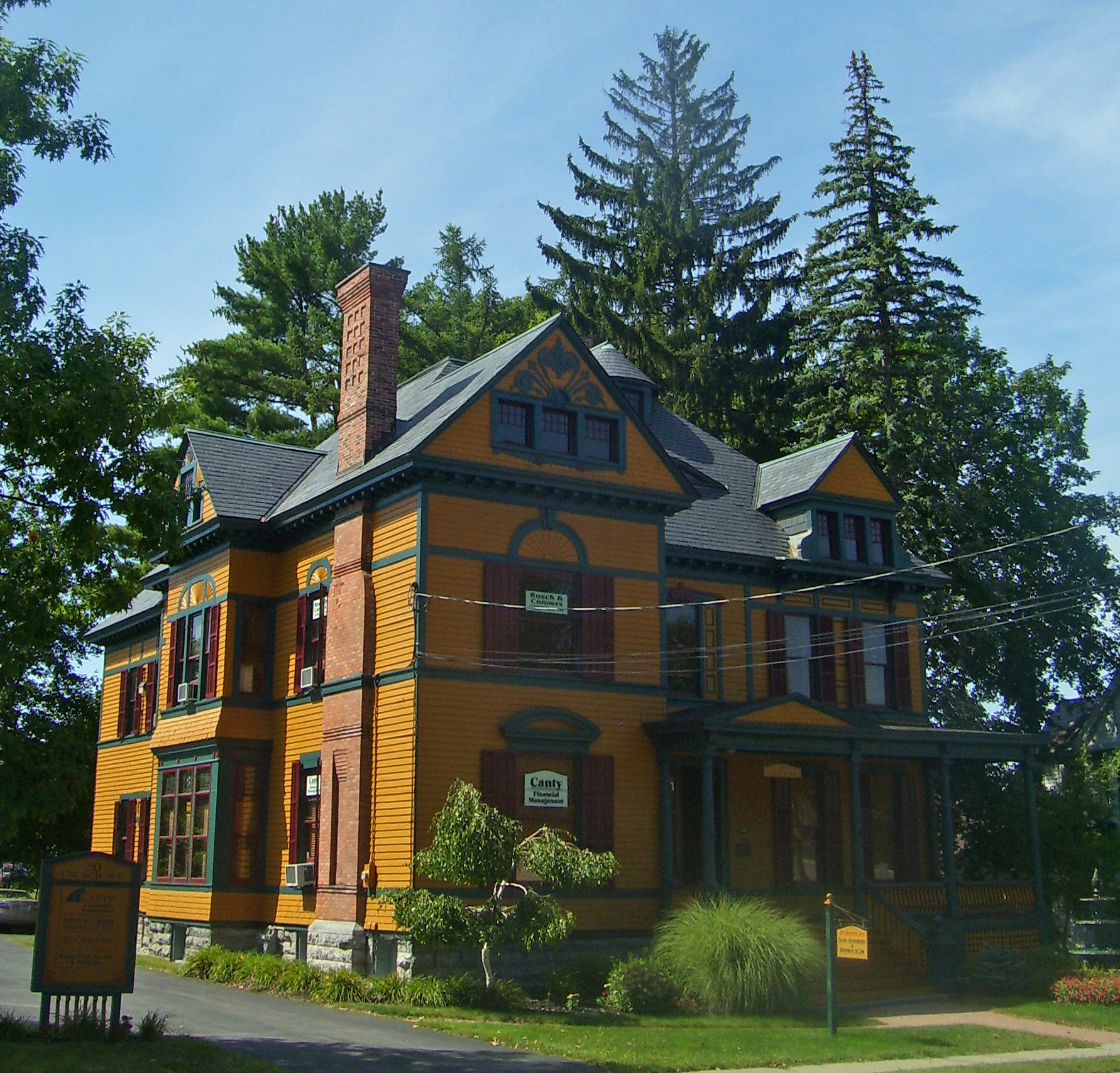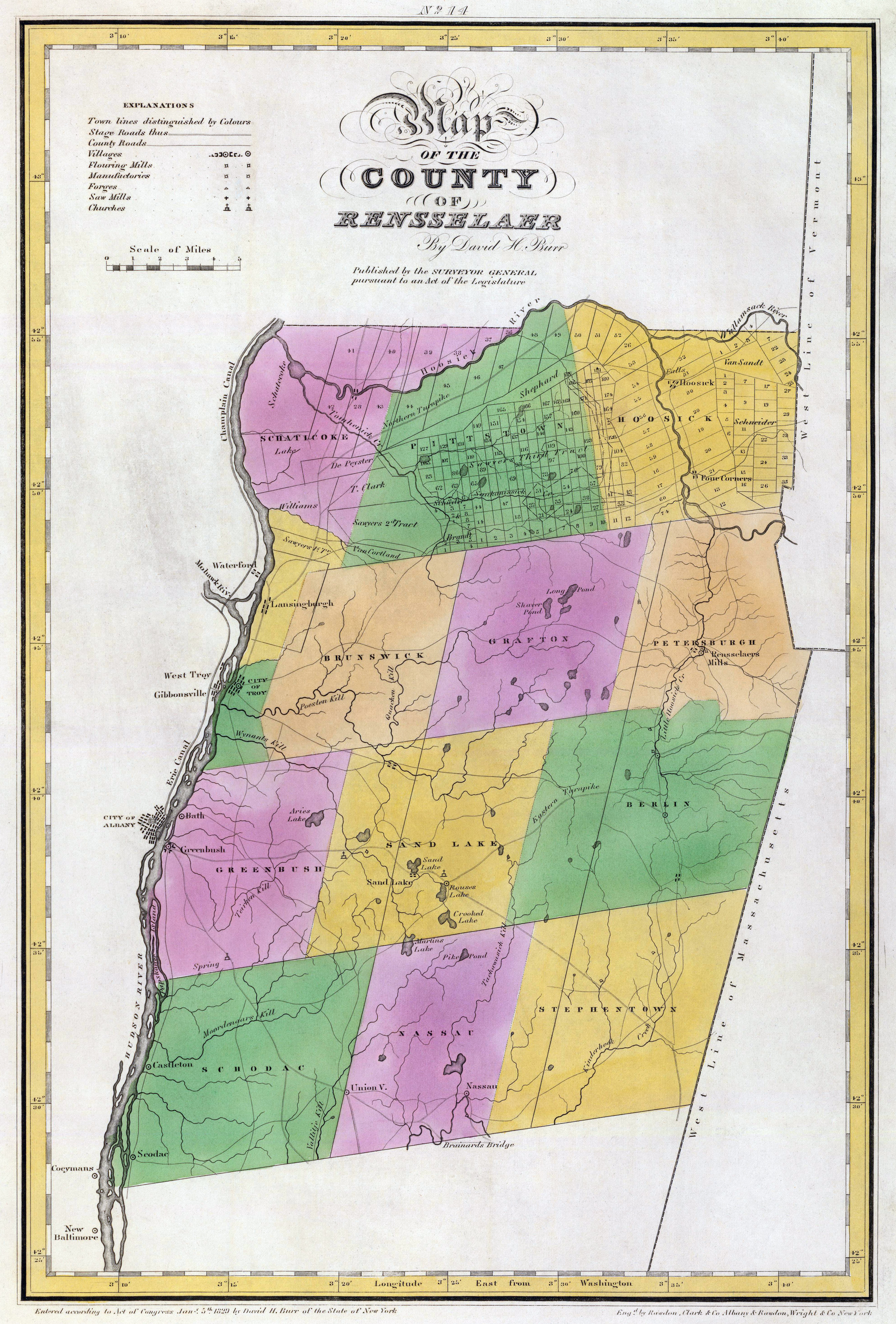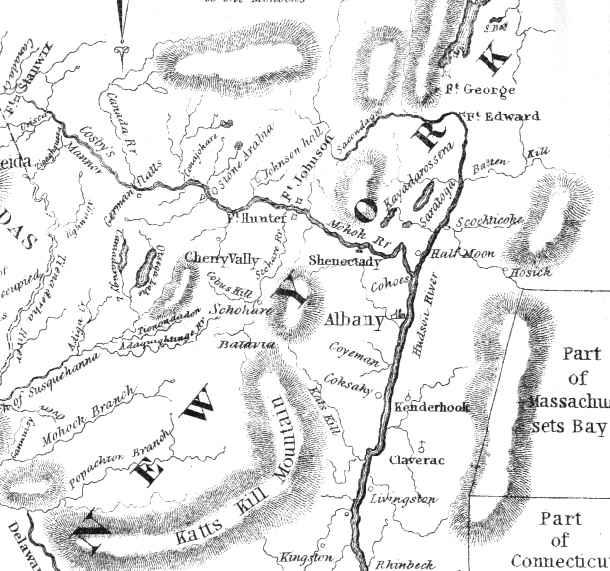|
Catholic Central High School (Troy, New York)
Catholic Central School is a private, centrally located pre-K-12 regional Catholic school in Latham, New York, within the Roman Catholic Diocese of Albany. It was formed in 2022 with the merger of Saint Ambrose elementary school in Latham with Catholic Central High School in Troy, New York. The new school is located on the grounds of the former Saint Ambrose School. The school's Troy property was put up for sale in March 2022. Catholic Central In 2022 Catholic Central High School partnered with St. Ambrose Parish school in Latham to create a Pre-K - Grade 12 regional institution. The school is located on the St. Ambrose campus. Students at Catholic Central are encouraged to perform ten hours of community service. Athletics The school offers indoor track, volleyball, and basketball; boys and girls baseball, bowling, cheerleading, cross country, football, golf, soccer, softball, tennis, track and field. History Catholic Central High School Catholic Central High School, a coed ... [...More Info...] [...Related Items...] OR: [Wikipedia] [Google] [Baidu] |
Latham, New York
Latham is a hamlet (and census-designated place) in Albany County, New York, United States. It is located along U.S. Route 9 in the town of Colonie, a dense suburb north of Albany. As of the 2010 census, the population was 20,736. Latham was a census-designated place in the 1970, 1980, and 1990 US Censuses, but ceased to be in the 2000 Census, then became a CDP again in 2020. History The area was known at different times in its history as Yearsley's (c. 1829), Van Vranken's (c. 1851), Town House Corners (c. 1860) and Latham's Corners, named after hotel owner William G. Latham. The "corner" referred to is now the intersection of Troy-Schenectady Road ( NY Route 2) and Old Loudon Road. Before European expansion to North America, Latham was occupied by Mohicans. The Old Loudon Road was built in 1755 during the French and Indian War to bring troops and provisions from Albany to the areas of Lake George and Ticonderoga. The Troy and Schenectady Turnpike was built in 1802 and i ... [...More Info...] [...Related Items...] OR: [Wikipedia] [Google] [Baidu] |
Green Island, New York
Green Island is a coterminous town-village in Albany County, New York, United States, some north of Albany. Green Island is one of only five such town-village amalgamations in New York. The population was 2,620 at the 2010 census, and the ZIP code is 12183. While the town of Green Island was once an island, it was connected to the mainland on the west side of the Hudson River in the 1960s. Green Island is also the smallest town, by area, in New York, covering ; by contrast, the largest towns in the state by area are Brookhaven, which covers an area of (though much of that is water), and Webb, which has the largest land area at . History Today's town and village of Green Island is connected to the mainland on the west side of the Hudson River. However, it was once called Tibbett's Island and is situated on land that was, in the past, an island. The First (or South) Branch of the Mohawk River delta once ran between the island and Watervliet, separating the island from main ... [...More Info...] [...Related Items...] OR: [Wikipedia] [Google] [Baidu] |
Brunswick (Brittonkill) Central School District
Brunswick (Brittonkill) Central School District (BCSD) is a rural fringe central school district located east of the city of Troy whose main campus resides in the town of Brunswick in Rensselaer County, New York, United States. The district has two operating school buildings: Tamarac Elementary School (Pre-K through 5) and Tamarac Secondary School ( 6 through 12). The district is a member of the Rensselaer-Columbia-Greene Boards of Cooperative Educational Services (BOCES), known aQuestar III The district was created upon the centralization (consolidation) of fourteen smaller districts in Brunswick, Pittstown, Grafton, and Poestenkill in 1956 and the high school opened in 1958. The first class graduated in 1960. The district had a combined student body of 1363 during the 2007–2008 school year. History The district was created upon the centralization (consolidation) of local schools in 1956. Previously, Brunswick was serviced by twelve smaller districts, each usually m ... [...More Info...] [...Related Items...] OR: [Wikipedia] [Google] [Baidu] |
Schenectady County, New York
Schenectady County () is a county in the U.S. state of New York. As of the 2020 census, the population was 158,061. The county seat is Schenectady. The name is from a Mohawk language word meaning "on the other side of the pine lands," a term that originally applied to Albany. Schenectady County is part of the Albany-Schenectady-Troy, NY Metropolitan Statistical Area, and is west of the confluence of the Mohawk with the Hudson River. It includes territory on the north and the south sides of the Mohawk River. History This area of the river valley was historically occupied by the Mohawk people, the easternmost of the Five Nations comprising the Iroquois Confederacy or ''Haudenosaunee''. They cultivated maize fields in the flats along the Mohawk River and had villages in the hills. European settlement started in the present-day county by Dutch colonists in the 17th century; the village of Schenectady was founded in 1661. The fur traders in Albany kept a monopoly and prohibited ... [...More Info...] [...Related Items...] OR: [Wikipedia] [Google] [Baidu] |
Saratoga County, New York
Saratoga County is a county in the U.S. state of New York, and is the fastest-growing county in Upstate New York. As of the 2020 U.S. census, the county's population was enumerated at 235,509, representing a 7.2% increase from the 2010 population of 219,607, representing one of the fastest growth rates in the northeastern United States. The county seat is Ballston Spa. Saratoga County is included in the Capital District, encompassing the Albany-Schenectady-Troy, New York Metropolitan Statistical Area. Saratoga County's name was derived from the Iroquois word ''sah-rah-ka'' or ''sarach-togue'', meaning "the hill beside the river", referring to the Hudson River bordering the county on its eastern flank and the Mohawk River delineating its southern border. Saratoga County, bisected by the toll-free, six-lane Adirondack Northway, serves as an outdoor recreational haven and as the gateway to the Adirondack Mountains and State Park for the populations of the Albany and New York Ci ... [...More Info...] [...Related Items...] OR: [Wikipedia] [Google] [Baidu] |
Rensselaer County, New York
Rensselaer County is a county in the U.S. state of New York. As of the 2020 census, the population was 161,130. Its county seat is Troy. The county is named in honor of the family of Kiliaen van Rensselaer, the original Dutch owner of the land in the area. Rensselaer County is part of the Albany-Schenectady-Troy, NY Metropolitan Statistical Area. History The area that is now Rensselaer County was inhabited by the Algonquian-speaking Mohican Indian tribe at the time of European encounter. Kiliaen van Rensselaer, a Dutch jeweler and merchant, purchased the area in 1630 and incorporated it in his patroonship Rensselaerswyck. (It was part of the Dutch colony New Netherland). The land passed into English rule in 1664; the Dutch regained control in 1673, but the English took it back in 1674. Until 1776, the year of American independence, the county was under English or British control. The county was not organized as a legal entity until after the Revolution, in 1791, whe ... [...More Info...] [...Related Items...] OR: [Wikipedia] [Google] [Baidu] |
Capital District, New York
The Capital District, also known as the Capital Region, is the metropolitan area surrounding Albany, the capital of the U.S. state of New York. The Capital District was first settled by the Dutch in the early 17th century and came under English control in 1664. Albany has been the permanent capital of the state of New York since 1797. The Capital District is notable for many historical events that predate the independence of the United States, including the Albany Plan of Union and the Battles of Saratoga. Etymology The earliest known reference to the name "Capital District" stems from a Capital Police District that was created in the Albany area in the late 1860s. In the 1910s, several economic and government organizations covering the area used "Capital District" in their name, such as the Capital District Conference of Charities and Corrections in 1913, the Capital District Life Underwriters Association also in 1913, and the Capital District Recreation League. The Capital ... [...More Info...] [...Related Items...] OR: [Wikipedia] [Google] [Baidu] |
Roman Catholic Archdiocese Of Saint Paul And Minneapolis
The Archdiocese of Saint Paul and Minneapolis ( la, Archidiœcesis Paulopolitana et Minneapolitana) is a Latin Church ecclesiastical jurisdiction or diocese of the Catholic Church in the United States. It is led by an archbishop who administers the archdiocese from the cities of Saint Paul and Minneapolis. The archbishop has both a cathedral and co-cathedral: the mother church, the Cathedral of Saint Paul in Saint Paul, and the co-cathedral, the Basilica of Saint Mary in Minneapolis. The archdiocese has 188 parish churches in twelve counties of Minnesota. It counts in its membership an approximate total of 750,000 people. It has two seminaries, the Saint Paul Seminary and Saint John Vianney College Seminary. Its official newspaper is ''The Catholic Spirit''. History In 1680, a waterfall on the Upper Mississippi River was noted observed in a journal by Father Louis Hennepin, a Belgian Franciscan Recollect and explorer. Hennepin named them the ''Chutes de Saint-Antoine'' o ... [...More Info...] [...Related Items...] OR: [Wikipedia] [Google] [Baidu] |
Harry Joseph Flynn
Harry Joseph Flynn (May 2, 1933 – September 22, 2019) was an American prelate of the Catholic Church who served as archbishop of the Archdiocese of Saint Paul and Minneapolis from 1995 to 2008. He previously served as bishop of the Diocese of Lafayette from 1989 to 1994. Biography Early life Harry Flynn was born in Schenectady, New York, on May 3, 1933 to William and Margaret Mahoney Flynn. Orphaned when he was age 12, he was primarily raised primarily by two aunts. Flynn attended from Siena College in Loudenville, New York, earning bachelor and master degrees in English. He then attended Mount Saint Mary's Seminary in Emmitsburg, Maryland, Priesthood Flynn was ordained on May 18, 1960 for the Diocese of Albany. After his ordination, Flynn taught English at Catholic Central High School in Troy, New York and held pastoral positions in several parishes. In 1965, Flynn went to Maryland to become a faculty member and dean at Mount Saint Mary's Seminary. Flynn was pro ... [...More Info...] [...Related Items...] OR: [Wikipedia] [Google] [Baidu] |
Cluett Peabody & Company
Cluett Peabody & Company, Inc. once headquartered in Troy, New York, was a longtime manufacturer of shirts, detachable shirt cuffs and collars, and related apparel. It is best known for its Arrow brand collars and shirts and the related Arrow Collar Man advertisements (1905–1931). It dates, with a different name, from the mid-19th century and was absorbed by Westpoint Pepperell in the 1980s. The Arrow name is still licensed to brand men's shirts and ties. The company manufactured shirts and collars in a historic building at 123 First Street in Leominster, Massachusetts. The building was constructed in 1902 and added to the National Register of Historic Places in 1989. History The Arrow shirt company was founded by William H.Titus and his partner in Chicago, Illinois and in the late 1800s merged with Cluett Peabody. Both companies had about $20 million in annual sales at the time of the merger. Titus and his partner later became co-chairman of the company. Titus remained on t ... [...More Info...] [...Related Items...] OR: [Wikipedia] [Google] [Baidu] |
West Hall (Rensselaer Polytechnic Institute)
West Hall is a building on the Rensselaer Polytechnic Institute campus in Troy, New York, United States. It is currently home to the Arts Department at RPI. It was previously a hospital, and is listed on the National Register of Historic Places as Old Troy Hospital. Description A plaque on the southwest corner of West Hall reads as follows: "The Corner Stone of the Troy Hospital was laid on the 28th of June 1868 by the right Rev. Bishop Conroy". The hospital was opened in 1869 and was operated by the Sisters of Charity of Saint Vincent de Paul. The design of the building is due to Marcus F. Cummings of Troy and noted as a major example of French Second Empire architecture Second Empire style, also known as the Napoleon III style, is a highly eclectic style of architecture and decorative arts, which uses elements of many different historical styles, and also made innovative use of modern materials, such as i .... The Sisters of Charity sold the building to the Albany Dioces ... [...More Info...] [...Related Items...] OR: [Wikipedia] [Google] [Baidu] |
Lansingburgh, New York
Lansingburgh was a village in the north end of Troy. It was first laid out in lots and incorporated in 1771 by Abraham Jacob Lansing, who had purchased the land in 1763. In 1900, Lansingburgh became part of the City of Troy. Demographics Lansingburgh has had a predominantly working class Irish Neighborhood since the late 1880s. In the 12182 zip code 71% of residents are Non-Hispanic White, 17% Non Hispanic Black or African American, 9% Hispanic or Latino and 3% other. Top Ancestries reported in the zip code 12182 are 22% Irish, 13% African American, 8% Italian, 7% French, 6% Puerto Rican and 3% Trinidadian. The Median Household Income for this zip is 31,321. 35.5% of the population is living below the poverty line. As of 2015, the Lansingburgh Central School District has an 87% graduation rate for the Senior High School. This is higher than most other local urban school districts. 65% of students in the district are economically disadvantaged. The district is 67% Non-Hispanic ... [...More Info...] [...Related Items...] OR: [Wikipedia] [Google] [Baidu] |





